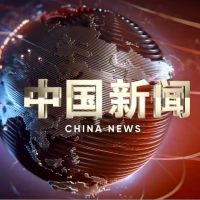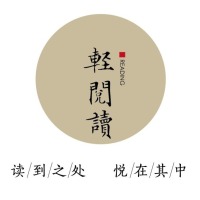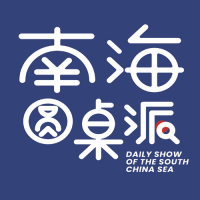Authoritative Analysis: Who Is Undermining the Marine and Political Environment of the South China Sea?

A Survey Report on the Coral Reef Ecosystem of Tiexian Jiao and Niu’e Jiao compiled by China’s leading research institutes on nature and ecology was released in Beijing on April 25. Based on satellite remote sensing and field surveys, the report provides a first comprehensive, systematic assessment of the coral-reef ecosystems at Tiexian Jiao and Niu’e Jiao.
The report reveals that the coral reef ecosystem of Tiexian Jiao has degraded severely, whereas the coral reef ecosystem of Niu’e Jiao is in a healthy state. According to the report, outbreaks of the crown-of-thorns starfishes are the main culprit behind the degradation of the ecosystem at Tiexian Jiao, while frequent human activities, especially the Philippines’ persistent and illegal construction on Zhongye Dao, have brought adverse impact on the health of the ecosystem.
On what basis does the report attribute Tiexian Jiao’s degradation to these factors? What strategic objectives underlie the Philippines’ unlawful occupation and expansion at Zhongye Dao? And what measures should China and ASEAN take to address these damaging actions, both ecological and political, in the South China Sea ? To shed light on these hot issues, CMG Voice of the South China Sea (CMG VSCS) conducted exclusive interviews with Chen Chenghao, an engineer at the Ministry of Natural Resources’ South China Sea Ecological Center who participated in the survey, together with Yang Xiao, maritime specialist at the China Institute of Contemporary International Relations and Peter T.C. Chang, senior visiting fellow at the ISEAS–Yusof Ishak Institute in Singapore.
Marine debris Made in the Philippines
CMG VSCS: Tiexian Jiao lies adjacent to Zhongye Dao, and when you and your colleagues conducted surveys in the waters around Tiexian Jiao, what conditions did you observe on Zhongye Dao? The report notes that construction activity by the Philippines on the illegally occupied Zhongye Dao has impacted Tiexian Jiao’s ecosystem. What’s your basis of this?
Chen Chenghao: During our surveys at Tiexian Jiao, we observed continuous signs of construction at the pier on Zhongye Dao carried out by the Philippines. Such ongoing coastal engineering work discharges large amounts of household and industrial wastewater, which was laden with heavy metals, and thus can damage coral-reef ecosystems. During our underwater investigations at Tiexian Jiao, we also encountered a substantial quantity of debris. Some of the items we collected bore Filipino-language labels or the words “Product of the Philippines” such as soda cans and coffee packaging.
Furthermore, during fieldwork, team members witnessed foreign fishing vessels using explosives, generating water plumes approximately two to three meters high. Such blast fishing directly and physically destroys the structure of coral, leading to fragmentation of the reef framework. The greatest impact of destructive fishing is the potential large-scale decline of herbivorous fish that grazes on macroalgae in reef areas—loss of these grazers can allow macroalgae to overgrow the seabed, creating ideal nursery grounds for juvenile crown-of-thorns starfishes. This dynamic may be one of the inducements to the massive outbreak ofcrown-of-thorns starfishes observed at Tiexian Jiao.

Underwater debris traced to the Philippines was discovered at Tiexian Jiao
Illegal Occupation and Expansion Leave the South China Sea's 'Pearl' Deeply Scarred
CMG VSCS: To your knowledge, what unlawful expansion activities have the Philippines carried out on China’s Zhongye Dao during its illegal occupation?
Yang Xiao: Previously, the Philippines constructed an airstrip of approximately 1,500 metres on the island and subsequently enlarged the island’s harbour basin. Currently, Zhongye Dao hosts military facilities such as barracks and anti-aircraft gun observation posts. Notably, the Philippines has established a so-called “Kalayaan administrative institution” on the island and built several civilian facilities, attempting to downplay its military nature and create an illusion of the so-called actual control of Zhongye Dao.
CMG VSCS: What impact has the ongoing illegal expansion had on the ecological environment of the surrounding waters?
Yang Xiao: The impact of illegal expansion and other human activities by the Philippines on the marine environment on Zhongye Dao is incalculable. It is known to all that the Philippines’ infrastructure construction standards lag far behind those of other Southeast Asian countries. In the island country, many construction projects have severely damaged coastal ecosystems and undermined the livelihoods of local fishermen, forcing them to appeal to the international community and NGOs. If Zhongye Dao undergoes another large-scale expansion, the heavy machinery used by the Philippines will undoubtedly continue to destroy the reef flat and coral structures below the surface. Even more worrying is the Philippines’ severe plastic pollution, which has made it one of the world’s largest sources of marine debris. Philippine personnel on the island generates household waste continuously and discards it indiscriminately. These pollutants then spread in the sea with the currents. Thus, what we see is not only a “pearl of the South China Sea” left deeply scarred, but also an accelerating coral-reef degradation and other marine-ecological crises that will have a severely adverse impact on the entire South China Sea ecosystem.

Broken coral branches discovered on Tiexian Jiao in 2024
Behind the destruction of the South China Sea's ecology lies a political agenda of infringement and destabilization
CMG VSCS: According to Philippine media, in 2025 Manila plans to spend at least 19.5 billion pesos (approximately RMB 250 million) on expanding Zhongye Dao. Why is the Philippines pouring so much money into this project despite tight domestic finances, and what ambitions lie behind this move?
Yang Xiao: Allocating 19.5 billion pesos to expand an illegally occupied feature far from the Philippine mainland marks a very large-scale investment. Although the Philippine government claims that the expansion is intended to provide so-called “convenience services” for Filipino fishermen and to develop tourism, in fact it provides a pretext for maritime infringement and serves as a fig leaf for it to cover up rampant domestic corruption.
A significant portion of the Philippines’ defense budget comes from U.S. aid, so how these funds are spent is heavily influenced by Washington. Although the United States currently cannot freely access the Philippines’ illegally occupied South China Sea features, it may change in the future. Enlarging Zhongye Dao’s airstrip is an effective way to prepare for closer military coordination between the U.S. and the Philippines in the South China Sea—enabling Manila to make waves at sea to contain China. This gambit is a dangerous calculation.
Beyond acting as a U.S. “pawn”, Philippine authorities and the military are exploiting disputes in the South China Sea to conduct clandestine power-for-profit deals. Corruption is rife within its armed forces. Over the past two years, Filipino households have faced skyrocketing prices and shortages of electricity and fuel. But the Philippine government has solved none of these domestic problems. Instead, it allows these dirty transactions to continue to harm ordinary Filipinos and undermine peace and stability in the South China Sea.

During the field survey, Philippine’s construction work is underway around the western harbor basin of Zhongye Dao
CMG VSCS: Some improper human activities are damaging the South China Sea’s ecosystem. How do you assess these actions? According to your long-time research on Asia-Pacific geopolitics, what other factors are affecting the region’s peace and development?
Peter T.C. Chang: The actions of certain ASEAN state not only harm the natural environment but also undermine nation-to-nations ties in the region. They pursue narrow nationalism, prioritize their own interests, and disregard the collective welfare of the region. This short-sighted approach of seeing the trees but missing the forest carries far-reaching consequences. Moreover, interference from external forces in regional affairs is another major factor eroding peace and stability. Worse, such meddling was seldom motivated by genuine concern for the region’s interests. Rather, it seeks to turn the South China Sea into a venue for geopolitical rivalry, using regional countries as a pawn for their own gain. These intertwined internal and external factors are severely disrupting the geopolitical environment of the South China Sea and ASEAN at large.
ASEAN has always adhered to the principle of centrality and neutrality. We are always wanting to affirm that we do not want to take sides in the broader geopolitical rivalry. Unfortunately, some members have decided to abandon this neutrality position. They are putting the whole region at risk of an open conflict, that will not only affect their own specific country, but affect the whole of South China Sea and Southeast Asia itself. Therefore, although ASEAN adheres to non-interference in members’ domestic affairs, when a member’s actions clearly harm collective interests, the bloc has an unshirkable responsibility to voice that concern.














